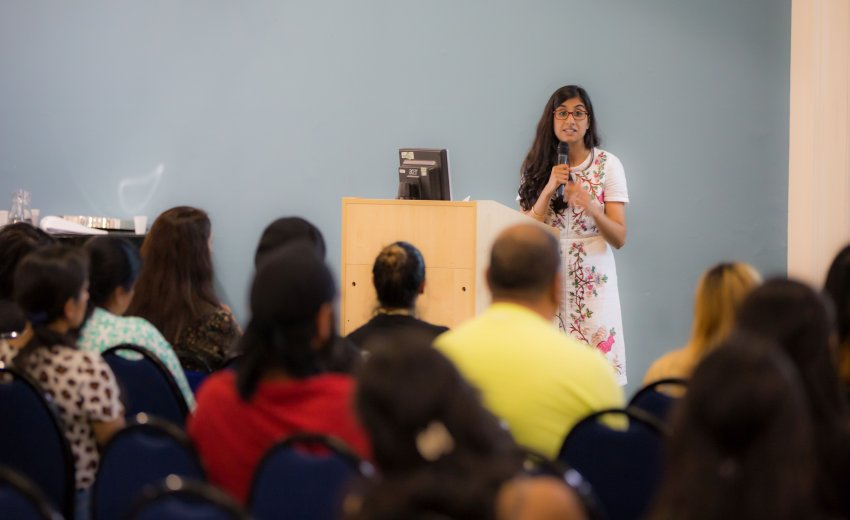*The role played by Sikh women during the Sikh Empire and beyond has been marginalised, as a result a hard hitting lecture by Dr Priya Atwal set out to explain the importance that women have played over a century.
* Dr Priya Atwal undertook her PHD thesis on the royalty of the Sikh Empire at the University of Oxford.
On 20th July 2018, a special took place looking at the role of Sikh women who contributed to the success of the Sikh Empire and the role of the dynasty of Maharajah Ranjit Singh in the Suffragette movement. The lecture was part of the successful Contemporary Sikh Art Exhibition initiated by the Sikh Museum Initiative (SMI) and ArtSikh which has witnessed 1000’s of visitors coming through to see different themes of Sikh art.
The lecture was hosted and introduced by SMI’s Kartar Singh who introduced the subject and explained the importance of having lectures which gave prominence to Sikh women in history. This was followed by a introduction to the evening by Dr Opinderjit Kaur Takhar (Senior Lecturer; Course Leader Religious Studies-University of Wolverhampton) who has recently set up the Centre for Sikh and Panjabi Studies. Opinderjit explained how Guru Nanak, the founder of the Sikh faith defined the role of women which was revolutionary for the time period. This was together with explaining how women can play a major role in Sikh Studies and the steps taken by the Centre for Sikh and Panjabi Studies in Wolverhampton to make this happen.
Dr Priya Atwal then spoke with regards to Sikh women during the tenure of the Sikh Empire (1799-1849) of Maharajah Ranjit Singh. The point made was that whilst the Maharaja had created a great empire he was aided by string of strong women. Whilst Sada Kaur of the Kanhaiya Misl helped Ranjit Singh create the Sikh Empire it was his consorts who provided guidance in his administration and his military conquests. This also included the development of elaborate architecture including the Havelis they lived in. The names of Mehtab Kaur and Datar Kaur are rarely mentioned but the last consort of the Maharaja, Jindan Kaur played a major part in the Anglo Sikh Wars and the fight against the British.
The name of Sophia Duleep Singh is seldom known among the British populace today but the daughter of Maharajah Duleep Singh was in a central position to upholding the legacy of truth and justice of the Sikhs. This was undertaken by Sophia not in her role as a Sikh ambassador but through the lens of women’s rights including the Suffragette movement which fought for the vote for women in the UK.
Priya commented that omitting the role of women in history was effectively only telling half of the story and the dynasty of the Sikh Empire had to be revisited to ensure the role of women was central to the narrative. The lecture was followed by Q and A session where participants asked questions on how Priya started in Sikh history to where she found her sources in her research. The research by Priya is being compiled for a book on Sikh women in the Empire schedule for release in 2019.
People attended the lecture from all over the UK and refreshments were provided by Guru Tegh Bahadur Sikh temple, Leicester, special thanks to Punjab 2000 for the photographs.
The Contemporary Sikh Art Exhibition runs until 31st July 2018 at the Old Café Library, Belvoir Street, Leicester.
Hear the radio Interview with Dr Priya Atwal on BBC Radio Leicester on 18/07/2018:
For more Pictures visit http://www.sikhmuseum.org.uk/sikh-women-in-history-sikh-empire-to-suffragettes-lecture/
